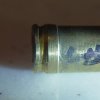Short version:
If you're shooting a non target grade rifle and your bullet has a properly placed cannalure, the collet type FCD is probably not going to hurt anything and may help with keeping velocities and C.O.A.L. consistent.
If you're shooting an accurate match rifle, you're probably going to get better results by reducing the diameter of your expander ball to increase neck tension, especially when using bullets without a cannalure or one that's improperly placed for the B.O.
Long version:
There's no single right answer that covers every situation, sometimes a crimp is a good thing, sometimes it's not.
I've found that the 300 Blackout does very well with cast bullets. The majority of the ammo I load in that chambering uses them. If anyone can tell me how to avoid using any crimp after you've belled case mouths to seat cast, I'm all ears.
For me, the greatest benefit of the FCD is that it allows me to get reasonably uniform crimps even when my case lengths have a little variation. I don't mind spending the time to trim, chamfer and deburr my cases when I'm loading for accuracy. If I'm loading up a couple of hundred rounds of low pressure subsonics to shoot with friends at the sand pit, I don't generally bother as long as the cases are within spec.
Most of the jacketed bullets I've used have cannalures that are in the wrong place for loading in 300 Blackout, for them I use the reduced diameter expander ball from my .308 Winchester die set and don't crimp.
I've loaded a few Barnes 110 grain tipped triple shock bullets for hogs.The cannalure on them is properly placed and during my work-up, crimps gave me more uniform velocities, so I crimp with that bullet.
You've already got the FCD, why not try it out where appropriate and draw your own conclusions? I guarantee that the results you obtain will be more useful to you than 50 pages worth of other people's opinions.
@Bart B
How did Sierra prove anything about the FCD "decades ago"?
I don't think the FCD has been around more than 10 or 15 years.








